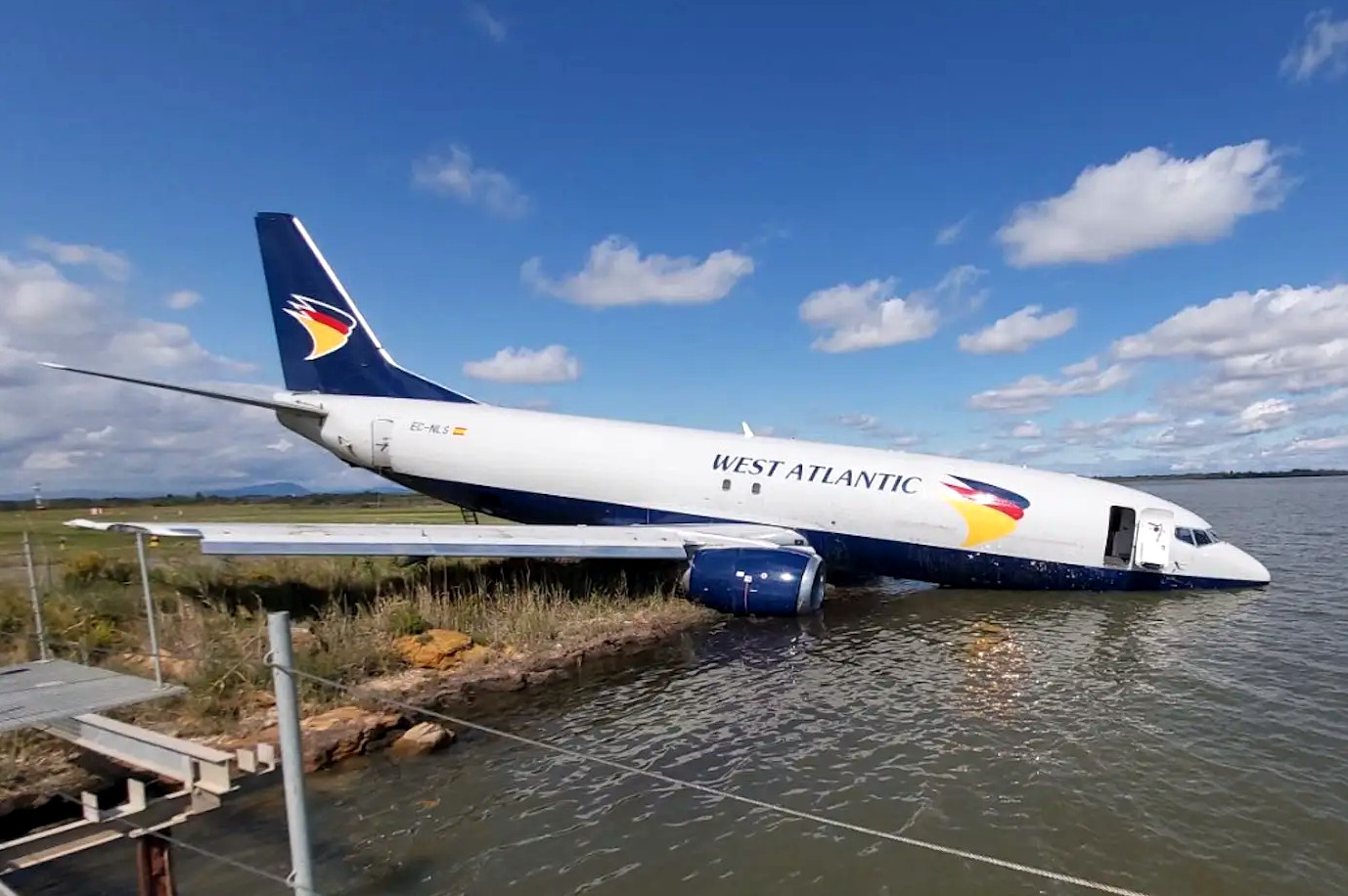 EC-NLS 737-400F Runway Overrun
EC-NLS 737-400F Runway Overrun
Home > Accident News > EC-NLS
Contents
On 24 Sep 2022, a Swiftair (ex-West Atlantic) 737-400F, EC-NLS (25856/2422 Ex G-JMCJ, N856NX, G-DOCW), delivered Feb 1993; overran Runway 12L by 200m at 00:36z, while landing at Montpellier, France (LFMT) in poor weather.
The 3 crew were uninjured but the aircraft may well be a commercial write off due to salt water damage.
Runway 12L is 2600x45m. It only has non-precision approaches (VOR or RNP), due to terrain to the NW of the airport. Both approaches have a 3.7 degreee approach path. The runway has 3.7deg PAPIs.
LFMT 240030Z AUTO 09011KT 050V130 5000 RA BR SCT013/// BKN022/// BKN028/// ///CB 17/16 Q1013 TEMPO 01015G25KT BECMG NSW BKN045 BKN055=
The BEA have issued their final report here:
Significant conclusions are:
- The co-pilot was the PF, the captain was the PM up to around 500 ft during the final approach.
- The crew carried out a briefing for the ILS approach to runway 30R.
- Following the runway in use change, the crew prepared the approach again but did not formally carry out a new briefing for the VOR Z 12L approach; no decision was taken concerning the descent mode, the approach speed and the rate of descent for the final approach.
- On flying through 1,000 ft AAL, the aeroplane was 200 ft above the approach slope.
- After acquiring visual references below 1,000 ft AAL, the PF disengaged the autopilot and autothrottle.
- While searching for the runway axis, the rate of descent increased; this destabilization was called out by the PM and corrected by the PF; a missed approach was not carried out.
- On short final, at around 500 ft AAL, the crew swapped PM/PF roles.
- After the roles had been swapped, the co-pilot, who had become the PM, remained focused on the external references and did not assume one of the main tasks of the PM, namely to monitor the parameters using the aeroplane’s instruments.
- Due to an increase in thrust, the aeroplane’s speed increased; this increase was not detected.
- When the aeroplane flew over the runway threshold, it encountered windshear, with a substantial decrease in the tailwind component which created an increase in the aeroplane’s performance (airspeed and lift).
- The windshear and the consequences on the flight parameters were not detected by the crew.
- The flare was started at 100 ft at a speed of 34 kt above the Vref; the throttle levers were not set to IDLE at this point.
- Nine seconds later, the throttle levers were set to IDLE when the aeroplane was at a height of 20 ft.
- The wheels touched down at approximately 1,500 m from the threshold of runway 12L, i.e. 1,100 m from the end of the runway with a Vref + 8 kt.
- The landing took place in a dark night with heavy rain.
- The length available after the touchdown point was very probably not sufficient for the aeroplane to be stopped safely within the runway limits.
- The aeroplane’s high speed during the landing run phase may have contributed to hydroplaning.
- The aeroplane crossed the end of runway 12L at a speed of around 70 kt.
- The aeroplane was substantially damaged after exceeding the Runway End Safety Area (RESA), when it tipped forward and came to a stop with its nose section submerged in the lake.
All of the information, photographs & schematics from this website and much more is now available in a 374 page printed book or in electronic format.
*** Updated 05 Aug 2023 ***


